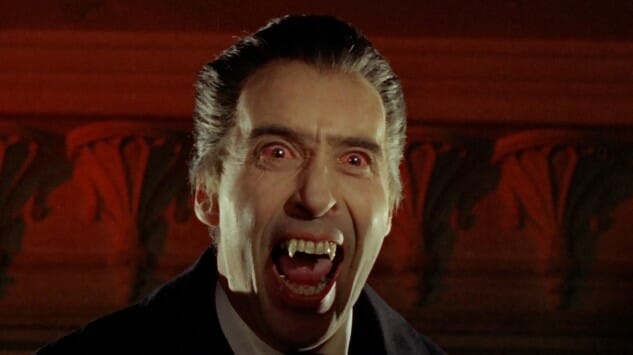The Best Horror Movie of 1966: Dracula: Prince of Darkness

This post is part of Paste’s Century of Terror project, a countdown of the 100 best horror films of the last 100 years, culminating on Halloween. You can see the full list in the master document, which will collect each year’s individual film entry as it is posted.
The Year
A trend is beginning to come into focus in 1966—it isn’t a weaker year, per se, if you’re judging purely by the volume of horror fare being released, but you’re not really seeing films you’d describe as having grand artistic aspirations or novel approaches. The giallo genre has become well established, and Hammer has been at its monster remakes for a good while. All in all, the horror cinema of this stretch, from roughly 1965-1967, is just beginning to feel slightly more stale. It’s a bit more like an era of potboilers, as established genres continue their successes, and the rest of the industry waits for the next evolution in horror, which would arrive on a few fronts in 1968.
That isn’t to say there aren’t some fascinating films. Mario Bava’s Kill, Baby … Kill! deserves credit for turning away from giallo and in the direction of supernatural suspense and horror, just as the giallo genre was heating up. It’s another film with Bava’s hallucinatory visual style and vivid colors, although they’re not quite as striking in their contrasts here as they are in Blood and Black Lace. So, too, does it invert the typical iconography of the genre, using a weathered old witch as one of its primary protagonists, whereas evil is symbolized by the spirit of a sweet-looking young girl, who compels those she curses to kill themselves in grisly ways. The film certainly has its prominent fans, Martin Scorsese and Dario Argento among them.
Meanwhile, Hammer releases a film with oft-overlooked importance to the zombie genre, The Plague of the Zombies. The “walking dead” of its title are still zombies in the Haitain voodoo sense, as seen in films such as I Walked With a Zombie, but their visual design seems highly influential upon the “reanimated corpse” style of zombies seen in George Romero’s Night of the Living Dead two years later. In fact, the bulging eyes and broken teeth of these zombies is in some ways a more visually striking image than Romero’s ghouls, though their menace is slightly undercut by the fact that these particular undead have been enslaved by an immoral industrialist to labor in his tin mines. Still, one wonders if The Plague of the Zombies might be a more cherished entry in the Hammer library if it could have boasted the presence of Christopher Lee or Peter Cushing. It’s hard to say, but we’ll go out on a limb and say that these are some of the scariest-looking “zombies” of the pre-Romero era.
1966 Honorable Mentions: Kill, Baby … Kill!, The Plague of the Zombies, The Diabolical Dr. Z, Daimajin, Island of Terror